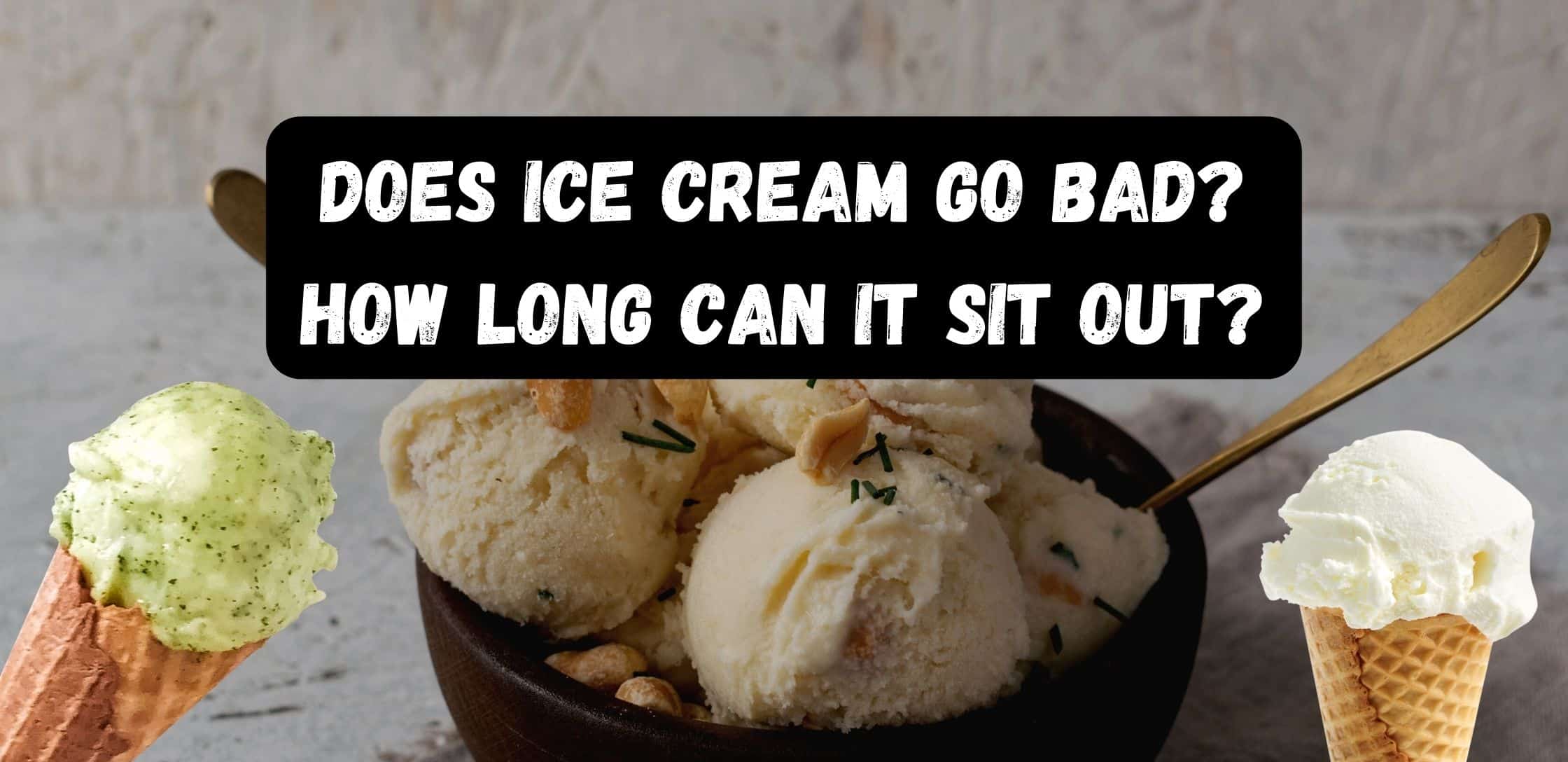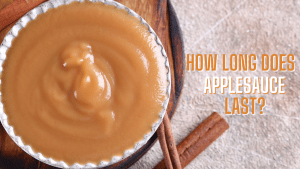Does Ice Cream Go Bad? How Long Can It Sit Out?
Important Note: When you buy through our links, we may earn a commission. As an Amazon Associate we earn from qualifying purchases. Content, pricing, offers and availability are subject to change at any time - more info.
Ice cream is made of happiness. It is the never-fail dessert, a perfect summer indulgence and it is a delicious, decadent way to take the edge off a hard day. And every summer we are digging around in the freezer to see what ice cream is still lying around and then we do a quick sniff test to see if it is still consumable.
Ice cream is generally made from milk fat, cream, sugar or sweeteners, ice, and a variety of flavors. The milk protein and fat in fact help preserve the shelf life of ice cream. This is why vegan ice creams usually have a much shorter shelf life. Vegan ice cream replaces the dairy in the ice cream with almond milk, coconut milk, soy milk, or other plant-based options. They are a good alternative for those will allergies, intolerances, or those making a lifestyle change, unfortunately, these plant-based ice creams have a much shorter shelf life. Homemade ice creams have the shortest shelf lives as they contain almost no preservatives.
Fruit-based ice creams as well as sorbets that are commercially manufactured have a longer shelf life than dairy or plant-based ice creams. But whatever kind of ice cream you are hoping to enjoy, there is a clock ticking on it.
Does Ice Cream Go Bad?
Despite finding permanent residence in the freezer, ice cream does in fact go bad. While freezers are often considered the place for eternal life, in reality, this is not the case. The low temperature in the freezer only slows down bacterial growth, it does not stop it. So, over time, whatever is stored in the fridge will eventually go bad including ice cream.
How Long Does Ice Cream Last?
- Ice cream has a pretty short life and ingredients like dairy and eggs that are sometimes used in it add to its brevity.
- A regular, dairy ice cream if kept sealed and unopened will be safe in the freezer for about 2 to 3 months after its best-by date. The best-by date is the date when the product reaches peak quality.
- If the ice cream has been opened, it is advisable to finish it or not keep it longer than 2 months. Even if the ice cream hasn’t spoiled yet, it would have greatly deteriorated in quality and both the taste and texture won’t give you the satisfaction you crave from your favorite ice cream.
- The life span of non-dairy or plant-based ice creams depends on the brand and type of non-dairy ice cream you have. Generally speaking, non-dairy ice cream that is unopened will last in the freezer for about 2-3 months.
- Once the non-dairy ice cream has been opened, it needs to be consumed withing 10 to 14 days.
- Homemade ice creams have the shortest life spans, as they are completely fresh and natural and have zero preservatives. Homemade ice cream will last in the freezer for about 2 weeks.
- Fruit-based ice creams and sorbets have the longest shelf life, not just because they have additives to extend their shelf lives, but also because they contain little to no dairy, which further extends its shelf life. Fruit-based ice creams and sorbets will last in the freezer for about 18 to 20 months.
| Type of Ice Cream | Shelf life in the freezer |
| Unopened dairy ice-cream | Best-by date + 2-3 months |
| Opened dairy ice cream | 2 months |
| Unopened non-dairy/plant-based ice cream | 2-3 months |
| Opened non-dairy/plant-based ice cream | 10-14 days |
| Homemade ice cream | 2 weeks |
| Fruit-based ice creams and sorbets | 18-20 months |
The above table is just a general estimate on the shelf life of various types of ice creams. Exact numbers depend on quality of products, freezer temperature and storage conditions. To be safe it is always best to go with what is printed on the pint or carton of ice cream. While best-by dates are quite flexible, and you can go past it, if stored properly, where expiry dates are concerned it is best to abide by it. Expiry dates indicates when the product is likely to go bad. Even if you don’t think the ice cream has gone bad, it is safer to throw it away.
How Long Can Ice Cream Sit Out?
Not for long. While letting the ice cream to sit out for a few minutes to soften it up or let it thaw gently is fine, you do not want any type of ice cream sitting out for too long. The general rule of thumb is to toss out ice cream that has been out for more than two hours.
This is because ice cream that has been out for so long, generally starts melting and this increases risk of bacteria like listeria. If your ice cream has been sitting out for more than two hours, don’t think twice about it, just throw it out and buy some fresh ice cream.
What Is The Best Way To Store Ice Cream?
- There is not much you can do to store or extend the shelf life of ice cream, considering it is already in the freezer. But you can make sure you don’t cut short its life by improper storage.
- Make sure the ice cream container is always closed. If left open, the ice cream will start taking on the smells of the freezer and more importantly, ice crystals will start forming inside the container and the lid, which is indicative of spoilage.
- If you want to extend the shelf life of your ice cream that you have already opened, or you want to make sure it does not go bad, then you can double wrap it. Either tightly wrap up the ice cream container with saran wrap or place the ice cream container in an airtight container before storing it in the freezer. This gives the ice cream an added layer of protection.
- If your ice cream has melted either because you have left it out or your freezer is malfunctioning, then it is safest to throw it out. Also, once ice cream has melted it is not advisable to refreeze it as not only does melted ice cream carry a higher risk of bacteria, but the texture and flavor of the ice cream also changes.
How To Tell If Your Ice Cream Has Gone Bad?
If you are not sure if the ice cream in your freezer is still good to consume, here are a few things to check.
- First, smell the ice cream, if it has a stale smell, or smells of plastic or cardboard, then your ice cream is old. If ice cream is left in the freezer for too long, not only does it lose it flavor, but it also takes on the smell and taste of the container it is stored in.
- Check if there are ice crystals on the surface of the ice cream or the insides of the container. This means your ice cream is on the brink of spoilage. If it is just a little bit of ice, you can scrape it off, and enjoy your ice cream, but if the ice continues forming and growing, your ice cream will get soft and gooey and will go bad. So, it is best to toss out your old ice cream.
- If you see mold or any kind of growth on your ice cream, it has gone bad.
- If your ice cream container is puffed up and bloated it is another indication of spoilage.
- Finally, taste the ice cream. If it tastes off or old, then it is safer to not consume it.
Soft, creamy ice cream is one of life’s greatest pleasures. It comes in a variety of flavors and forms, from churned to soft-serve and gelatos to name a few. And the flavors and colors and toppings they come in are innumerable. Enjoy your ice cream for as long as it is safe to eat, it is best to go by the expiry dates on the box. Eating spoiled ice cream will give you a host of illnesses. So, if you’re in doubt about your favorite pint in the freezer, it is best to throw it out.
























